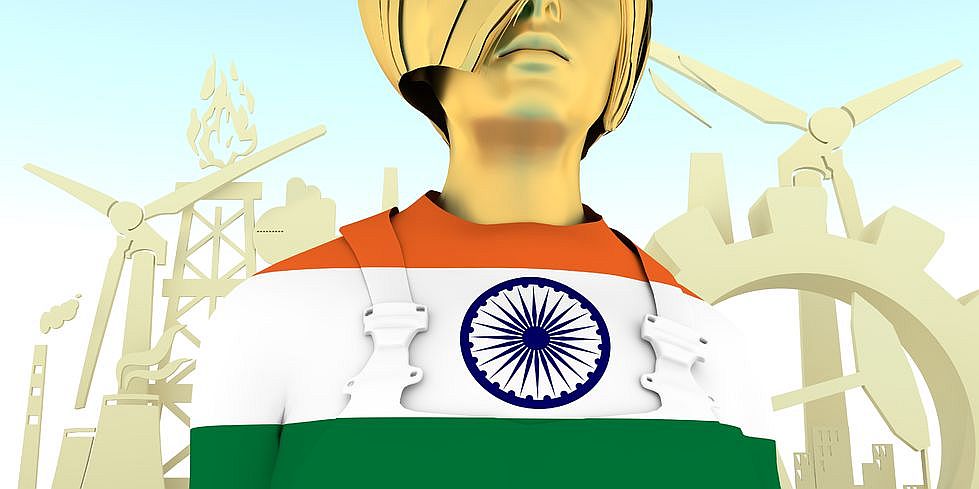IN-DEPTH: Enterprises across verticals in India are going through a phase of transformation and this change involves the adoption of digital technologies. Indeed, Digital Transformation has become the norm today. While organisations have adopted information technology solutions for years, the pace of this adoption has never been so quick and fervent. There are a number of reasons for this, but the push is coming from consumers who demand better and more innovative services. The app economy and the rise of digital payments are also driving the consumption of services. Cost has been the number one concern here, but then cloud computing came along and introduced new consumption models. To be in the top league in their respective industries, companies must adopt technologies like artificial intelligence, Blockchain, virtual reality/augmented reality/mixed reality, advanced analytics, Internet of things, cybersecurity, and of course, hybrid clouds. Technology is also fueling entrepreneurship and supporting millions of small and medium sized enterprises (SMEs) in India—who are now major contributors to the country’s GDP (6.11% to manufacturing and 24.63 to the service sector). There’s also a thriving startup ecosystem in India that is attracting global investors. The Indian government’s Digital India policies have accelerated the adoption of digital technology both at the consumer and organisational levels. Let’s take a look at the IT industry in India and the trends that shape it.
The Indian IT landscape
IT services and Business Process Outsourcing are the two major components of the IT industry in India. The IT Industry has increased its contribution to India’s GDP from 1.2% in 1998 to 7.7% in 2017. According to NASSCOM, the sector aggregated revenues of US$160 billion in 2017, with export revenue standing at US$99 billion and domestic revenue at US$48 billion, growing by over 13%. The United States accounts for two-thirds of India’s IT services exports.
NASSCOM expects revenues from exports in FY 2019 to be USD 135.9 billion and domestic revenue to be USD 41 bn.
As of the June 2019 quarter, the IT industry in India has been hit by global uncertainty. The Financial sector, which is a big spender on technology, has been severely impacted. Mint reports that with the exception of Infosys Ltd. and HCL Technologies Ltd. revenue growth for most IT companies is sagging. Even bellwethers like Tata Consultancy Service, Wipro Ltd. and Tech Mahindra reported lacklustre performance. But there is hope — there are orders in the pipeline and some wins.
Industry Adoption of Technology
The sectors that continue to lead in the adoption of technology are Banking & Finance, Insurance, Manufacturing, Retail/FMCG, e-commerce, Government, and Telecom. That’s not to say that other sectors have not embraced digital. Take the travel, transportation and food sectors for instance. Consumption of services and products in these sectors has seen a jump in recent years driven by mobile apps.
A thriving startup ecosystem driven by investments from global investors has seen the emergence of many “born in the cloud companies” or technology-led businesses. In fact, India has seen many “unicorns” (with a business valuation of over USD1 billion) emerging. These startups have launched business operations with technology at the core. We describe some successful startups below.
In the food and beverages industry, restaurant and food chains are powered by food tech companies with zingy names like ‘Zomato’ and ‘Swiggy’. These food tech companies provide the supply chain, enabling even an entrepreneur working from his kitchen at home to deliver food to homes and offices anywhere in the city.
The food tech sector bounced back and is offering employment to millions of citizens in India. According to the Financial Express, an analysis done by RedSeer Consulting shows the rise of this sector from a daily order volume of 3.7 lakh in 2017 to 15 lakh as of September 2018.
The transportation industry has also seen a radical transformation in India. Cab aggregators like Ola, Uber and Meru do not own any vehicles. The core of their business is technology that runs on the cloud, with consumer interfaces in the form of apps installed on our mobile phones. They use technology to aggregate their services, track a fleet of cabs, and then process payments. Humans are not involved except to drive the cabs and perhaps for that rare call from their call centres.
Supported by cash infusion from global investors like SoftBank Group and Tiger Global Management, cab aggregators continue to face challenges and have yet to see huge profits. On a positive note, consumption for these services is rising steadily in the metros and even in small cities. This demand is driven by rising smart phone penetration and the adoption of digital payments in India.
Transportation also extends to logistics. Tech like GPS devices and IoT sensors fitted on trucks are used for fleet tracking and management.
The hotel industry has also been disrupted (or shall we say enabled) by technology. Airbnb does not own any hotels and neither do internet startups like Oyo and Treebo. Yet they offer rooms at affordable rates and make bookings a snap for travellers. Booking.com and Travango are other popular room aggregators.
Flights are now booked through services like Makemytrip, Cleartrip, as well as Travango (among others). The travel agent was disrupted and had to remodel his business to survive.
The e-commerce industry has also been growing steadily in India, and it is not just Amazon and Flipkart. Entrepreneurs in Tier 2 and Tier 3 cities can also sell their products and services, and receive payments through portals such as Instamojo.
According to a report by Deloitte India and Retail Association of India, the Indian e-commerce market will touch USD 84 billion in 2021. Another report by NASSCOM and PwC India says the e-commerce market in India has the potential to grow more than fourfold to $150 billion by 2022.
Clean energy and sustainable energy solutions are another sector to watch. Technology can aid in the optimisation of solar, wind and hydel energy resources.
The Manufacturing industry, particularly the automobiles sector, is one of the biggest adopters of technology. Technology is being used on the shop floor and also in cars. Many companies can manufacture an SUV or sedan, but the leaders will be the ones who make connected vehicles with safety features, next-generation navigation & infotainment systems, and voice assisted driving.
The Volvo XC60 is a fine example of an SUV loaded with high tech features. The XC60 has driver assisted systems, semi-autonomous driving, pilot assist mode, traffic alert system, obstruction detection features, 360 degree camera system, automatic parking assist system, adaptive cruise control, and a state-of-the-art entertainment system. That’s a lot of tech packed into one SUV.
Technologies like IoT, cloud and advanced analytics are used to make this possible. Car buyers are demanding these features and asking questions about the aforementioned features – beyond the standard questions about the engine, fuel consumption, and transmission system.
Traditional IT solutions providers like Dell and IBM as well as engineering companies like Bosch and Fujitsu, are now working with automobile companies for connected car solutions. These companies have created their own frameworks and are working with Indian automobile manufacturers such as Maruti-Suzuki, Mahindra, and Tata Motors.
The next frontier will be electric vehicles; the Government of India has plans to make a major shift to electric vehicles by 2030. India unveiled the ‘National Electric Mobility Mission Plan (NEMMP) 2020’ in 2013 to address the issues of National energy security, vehicular pollution and growth of domestic manufacturing capabilities.
Government Initiatives and Digital Payments
The government’s Digital India policies are also driving growth in business. The banknote demonetisation drive introduced at the end of 2016 set off an explosion of cashless or digital payments. The government worked with institutions such as NPCI (National Payments Corporation of India) to introduce UPI (Universal Payments Interface) to facilitate instant payments between entities though digital wallets from non-banking entities such as Paytm. This increased the number of cashless payments in India, thanks to apps like BHIM, Paytm, Google Pay, Phone Pe, Freecharge and others. Linking these apps to their bank accounts via a unique UPI-ID (also called Virtual Payments Address), consumers can pay their utility bills or make peer-to-peer payments in a few seconds. This has been possible with the support of the banking regulator, RBI.
According to an Assocham-PWC India study, Digital payments in India will more than double to USD135.2 billion in 2023 from USD64.8 billion in 2019.
At the backend, there is a technology framework called IndiaStack that makes all this possible. IndiaStack is a set of APIs (application program interface) that allows governments, businesses, startups and developers to utilise an unique digital Infrastructure to solve India’s hard problems towards presence-less, paperless, and cashless service delivery.
Long before demonetisation was introduced, the Indian government introduced a unique national identity for citizens called Aadhaar. In 2009 it commissioned the UIDAI (Unique Identification Authority of India) headed by a panel of experts from industry and government to set up a system for identity authentication of its citizens.
Aadhaar serves as the authentication mechanism for digital payments through linked bank accounts – through UPI.
How IT companies are Responding
For years, IT companies have sold hardware and software solutions to corporates, mainly for data storage, data processing, and communications. These are decision support systems (DSS), management information systems (MIS) and communications systems (for the transmission of data to other locations). The term ‘Business Intelligence’ or BI was coined later. BI arrived in the form of analytics and dashboards that could give a snapshot of the business with real-time data became popular, especially with top-level managers.
The IT industry in india responded by developing software like ERP and CRM solutions. As the enterprise became dispersed, we saw the emergence of collaboration solutions. System Integrators and Independent Software Vendors stepped in to develop the infrastructure and systems to run business operations.
As enterprises adopted a mix of solutions, the infrastructure became complex and expensive to manage. And hence cloud computing models were introduced.
Applications that ran on-premise in ‘captive data centres’ for years were migrated to the cloud and managed by Cloud Service Providers. Software as a product became Software as a Service (SaaS). So instead of buying software licenses and installing software on application servers, businesses started renting it from the cloud on a subscription basis. The most common example is Microsoft Office 365.
But this eventually resulted in another problem: businesses were availing of services from multiple clouds. Some were using a mix of private and public clouds. So managing multiple clouds became a challenge. This also led to shadow IT – a concept where business units bypass their IT department for procuring infrastructure – and help themselves to infrastructure of the cloud. That throws up another set of challenges.
Cloud Service Providers like AWS, Microsoft, IBM, and Google now want to simply this management of multiple clouds and they talk about new concepts like ‘build once, run anywhere’. Earlier, software developers had to write code keeping in mind which platform that code was destined to run on. But now companies like Red Hat have made it easier for developers. ‘Serverless’ technology from AWS has also addressed this challenge.
Digitaisation has resulted in an explosion of data, which needs to be stored somewhere. That’s where data centres come in. Right now there is a huge demand for data centres in India. Data centre services providers are filling up capacity in a few months and are rampantly building new data centres. Most of the data centre providers we spoke to have plans for introducing new data centres in 2019-2020. These include ST Telemedia, CtrlS, Netmagic Solutions and ESDS. There are new entrants like Yotta (a subsidiary of the Hiranandani Group) and Sterling and Wilson (a JV between Wilson Electric Works and Sterling Investments of the Shapoorji Pallonji Group).
The IT industry in India continues to evolve in response to business challenges and customer demands. With increased headwinds on the exports front, the industry is increasingly focussing on local consumption of services and products.
Related Indian IT stories
Global IT companies look to India to build new capabilities
Digital Leaders and Digital Adopters Have Increased in India: Dell Technologies Study









